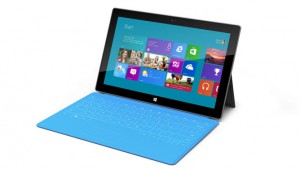Microsoft has announced several changes to the Microsoft 365 cloud. These new features will be of interest to both end users and companies alike. If you’ve opted in to see preview features, some of these items may be visible now.
Microsoft Viva Connections
At this point, many people are familiar with Microsoft’s existing product, Viva Insights. Microsoft is releasing a new module to the Viva family called Viva Connections. Viva Connections helps users stay connected with the latest and greatest communications. The goal is to empower users to take a more active role in their data and collaboration and allow users to interact with content more than ever before by commenting and reacting.
The main interface to Viva Connections is the dashboard, which is customizable. The interface becomes a gateway to a more modern employee experience. Viva Connections allows users to save a SharePoint article for later consumption and provides a platform for the company to push announcement videos to users. Viva Connections is currently in public preview and can be viewed from within Microsoft Teams. Here are some examples of the new interface (courtesy of Microsoft):


For more information, take a look at Microsoft’s page for the Viva Connections Public Preview.
Other Features Coming to Microsoft 365
While Viva Connections is the hot topic making the headlines, there are several other new features coming to the Microsoft 365 cloud.
One Player Video Playback in OneDrive/SharePoint
Changes to the video controls in SharePoint and OneDrive for Business will allow you to pop-out video for a more immersive experience. The new pop-out video provides new options to change playback speed from 0.5x up to 2x, and skip forward and back by 10 seconds. This new functionality makes reviewing videos, such as recorded meetings, easier and more efficient.
For example, Whiteboards will no longer be stored in SharePoint, but rather in the OneDrive of the creator. Also, Yammer now allows for nested replies, which improves conversation experience and keeps things in context.
Teams – Reply to Message
Microsoft Teams now allows users to respond to a specific message within a thread or conversation. Previously, you could reply to a whole conversation, but this was confusing when someone replied to a message further in the past. When replying to a specific message, a copy of the original message is quoted for reference.
Changes to SharePoint Online
The text web part in SharePoint is getting a minor update. Now you can paste images into a text web part. This automatically creates a gap around the pasted image so that text wraps as desired. There are also options to align to the left, right, and center. Also, formatting is updated so that spacing between headers and body, and between bullet points, is reduced slightly.
SharePoint Navigation in team sites can be switched between vertical and horizontal. You can now choose the design (left or top navigation) that works best for your team.
Share a list with a hyperlink. Now, the same rules that apply to sharing files/folders now also apply to sharing a list.
Microsoft Lists applied filters are being updated. You can now see which filters are applied. With a single click, you can view and adjust your filters, making this process a little more seamless.
Changes to Microsoft Planner
Microsoft is updating Recommended Plans in the Planner service. Now you can discover plans that are relevant to your work. This makes it easier to find tasks that are assigned to you but you haven’t noticed yet. Recommended Plans can be found in the left pane between Favorites and Recent.
There are also new options for managing Planner tasks. Previously, you could only move tasks between plans within the same team. Now users can move tasks to any Planner plan across Teams. To use this, click on the ellipse menu in the upper right corner of a task, and select Move task.
While most of these are not gigantic leaps forward, this shows a constant evolution that makes the Microsoft cloud better for everyone.



